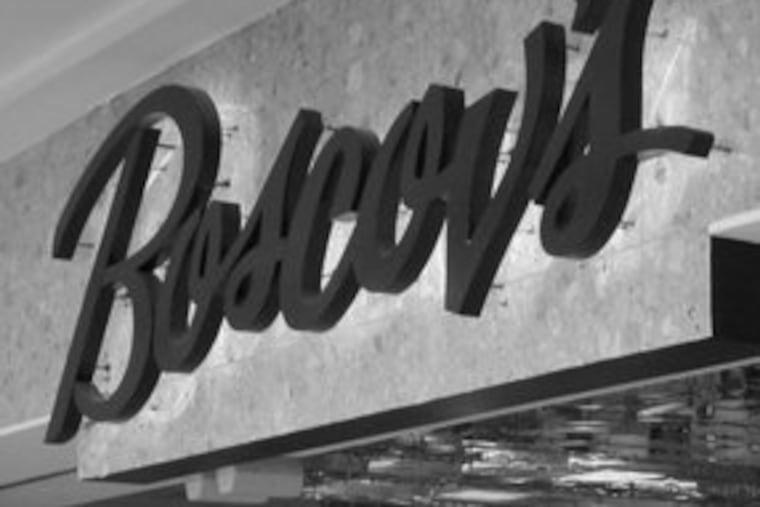PhillyDeals: Whole network of lenders rescued Boscov's
The rescue of the Boscov's department store chain from bankruptcy last week was financed by a multistate network of investors, banks and government funds.

The rescue of the
Boscov's
department store chain from bankruptcy last week was financed by a multistate network of investors, banks and government funds.
The extended family of patriarch Al Boscov raised $20 million. Two prominent mall developers that have been landlords to Boscov stores put up an additional $30 million: Philadelphian Ronald Rubin's Pennsylvania Real Estate Investment Trust committed a $10 million unsecured loan, and Cathco Diversified Fund L.P., which is owned by members of the family that runs Cafaro & Co., Youngstown, Ohio, put up an additional $20 million in equity, according to people familiar with the deal.
Both Rubin and the Cafaros have been prominent real estate investors, political campaign contributors and charitable donors in their respective communities.
"We're glad to support the community," said PREIT spokesman Shawn Southard. Cafaro family members were unavailable for comment at their Youngstown office. Cathco's board includes Cafaro chief executive officer Anthony Cafaro Sr. and his sons Anthony Jr. and William.
The State of Pennsylvania added $35 million in loans financed by federal Housing and Urban Development Section 108 economic-development funds, and a total of $11.7 million in additional HUD money was committed by the cities of Vineland and Atlantic City, N.J., and Scranton and Wilkes-Barre, said John Blake, acting secretary of Pennsylvania's Department of Community and Economic Development.
Those loans will be secured by Boscov's stores and store inventories, Blake said. Other financing wasn't available, he said. "If we didn't step up, the consequences would have been lasting," with cities like Scranton, Wilkes-Barre, Johnstown and Altoona losing jobs, property taxes, and property value if stores closed, he said. Boscov's employs 9,000, including about 5,500 in Pennsylvania.
But the government money won't be ready until April (and terms are still being negotiated), so a consortium of banks stepped in with a $46.7 million bridge loan until then.
The group is led, not by PNC, Wachovia, or other large regional lenders, but by Susquehanna Bank, of Lititz, Lancaster County.
Other bridge lenders included Harleysville National Bank; National Penn Bank, of Boyertown; Fulton Bank, of Lancaster; Vist Financial, of Leesport; and WSFS Corp., of Wilmington, said Joseph Harenza, chief executive of Griffin Financial Group, of Reading and King of Prussia, which assembled the bankers.
The deal also depended on a $210 million line of credit from Boscov's previous lenders - Bank of America Corp., Wells Fargo & Co., and GE Capital - plus CIT Group Inc., which joined Boscov's lenders for the first time, said J. Scott Victor, senior managing director at National City Investment Banking's Special Situations Group, in West Conshohocken, which represented members of the Boscov family.
The small-bank syndicate will be paid interest at the benchmark London interbank offered rate (LIBOR) plus 6 percent, or a total of around 8.5 percent at recent LIBOR rates, according to people familiar with the deal. The line of credit is priced mostly at LIBOR plus 4 percent.
Who'll buy bailout cars?
The U.S. government is preparing to lend to the
Big Three
automakers, because no one else will. Car dealers are watching the bailout with mixed feelings. They want their brands to be healthy. But they're not convinced that shoring up Detroit is going to move more cars tomorrow.
The auto industry is selling at a rate of 10 million vehicles per year, but "we dealers have inventory for 17 million," writes Larry Weathers Jr., of Weathers Dodge, Lima, in a note to PhillyDeals. "And we are hounded daily by the factory to order more inventory to help them. They try to sweeten the deal by offering incentives, rebates, special financing. But the fact remains, we have enough inventory at old prices, along with a used inventory at [high] values, to last a year.
"Bridge loans to the manufacturer are fine, but the keystone is for consumer confidence to soar, and for reasonable money to be made available for consumers to make reasonable loans."
Meanwhile, Weathers wrote, "we struggle to remain afloat, agonizing over the cuts we must make."